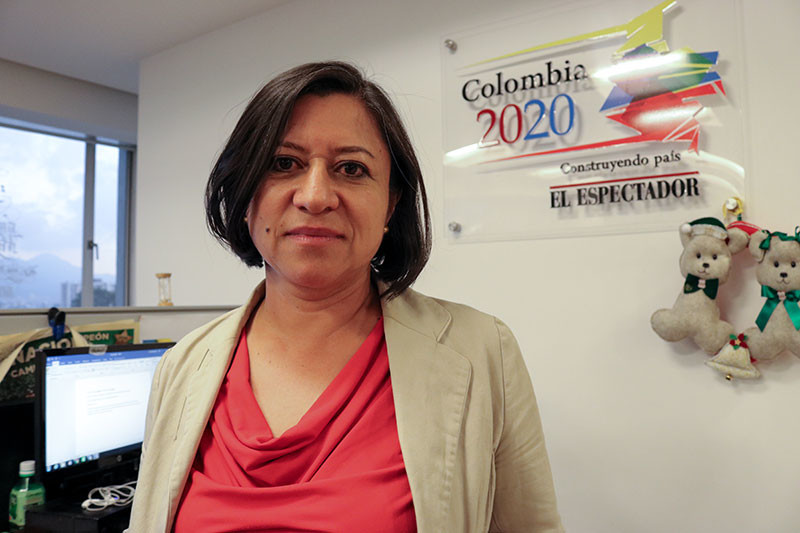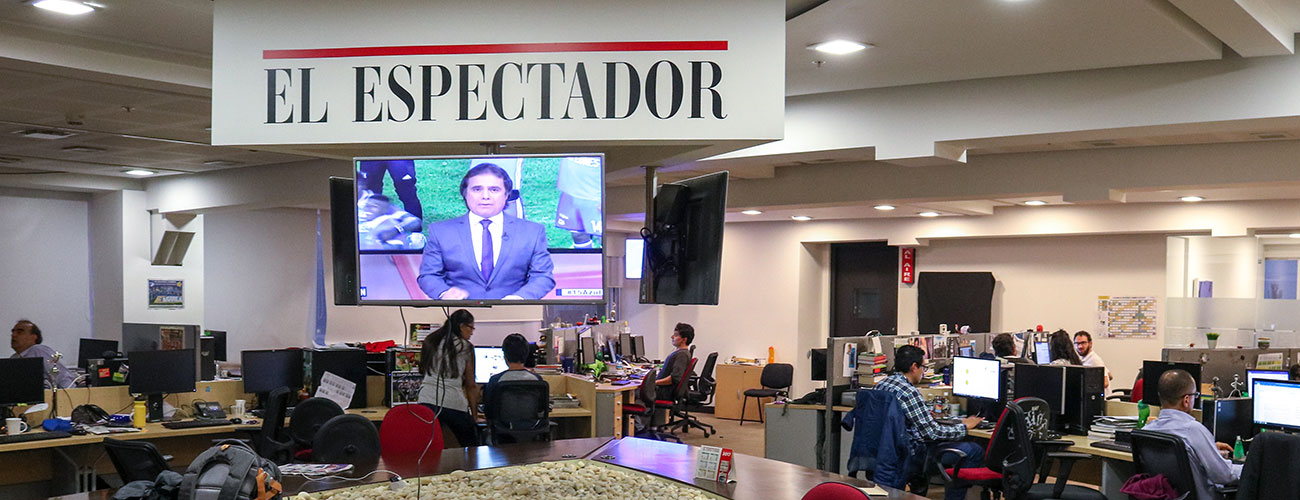Sign up for the daily CJR newsletter.
Two years ago, as peace negotiations began to show promise of ending Colombia’s 50-year civil war, international organizations leapt in to fortify the precarious process and help repair a fractured society. Alongside money for education, infrastructure, judicial action, and landmine removal, the contributions included funding for journalism.
Almost $500,000 flowed from groups like the European Union, the UN, and the German embassy, which viewed well-resourced, on-the-ground reporting as a crucial part of Colombia’s recovery.
The result is Colombia2020, a project of El Espectador, the country’s oldest newspaper. Bolstered by the international funding, its reporters travel deep into former and current conflict zones to recount stories obscured during decades of violence, and to foster dialogue between parties that, until recently, were trying to kill each other. The project appears as a page in the daily print edition and has its own website.
ICYMI: Another independent voice is silenced in Duterte’s war on the media
“We don’t try to show a rosy reality,” says Gloria Castrillón, director of Colombia2020, which is named for a vision of a peaceful Colombia by decade’s end. “We’re generating conversations that many times have not been easy to generate.”
In 2016, the Colombian delegation of the European Union wanted to finance a project that could help move the national conversation forward. In the big cities, too much ink was spent analyzing winners, losers, and legal tenets of the budding peace accords, according to journalists of El Espectador. Too little was spent assessing what impact peace would have on the lives of rural Colombians, who bore the brunt of the brutal conflict.
Castrillón, then editor of a magazine published by El Espectador, had been thinking the same thing for years. She had even pitched the idea to the newspaper publisher. He agreed with the importance of dedicating coverage to how Colombians would move beyond a conflict that divided communities. But he lamented a lack of funding for such endeavors.
When EU officials met Castrillón a few months later, she had all the conceptual framework for a project that was virtually ready to launch. An EU spokesman said El Espectador was the only outlet with a plan for special focus on the peace process, so the Union pledged about $300,000 to launch Colombia2020. Other funds eventually came from the UN and the German embassy.
“The possibility to associate the EU with this campaign was a sort of win-win,” says Francisco Garcia, chief of cooperation for the EU delegation in Colombia. “It gave some ‘prestige’ to the campaign carried out by El Espectador, and at the same time it allowed the EU to play a role in the consolidation of peace, which is our main purpose in Colombia.”
Castrillón and EU officials agreed that reporters funded in part by Colombia2020 would have a mission: recentering the conversation from polemicizing experts to affected communities, and illuminating seldom-discussed themes like gender and race in the conflict.

Gloria Castrillón, director of Colombia2020, had dreamed up the project for years but confronted a lack of funding, until she met officials from the European Union. Photo: Dylan Baddour
They agreed the project would go beyond journalism and include an educational campaign about the peace process. So Colombia2020 got some creative license.
“Journalistically speaking, we have the task to make visible some subjects and voices that haven’t been visible in the Colombian press for many years,” says Natalia Herrera Durán, the project’s editor. “One of our biggest frustrations is that many Colombians don’t want to leave behind habitual conversations or official discourse.”
In Colombia, media has been centralized in the big cities. Any excursions into the conflict zone were usually made alongside the national army, producing war coverage slanted toward the military perspective, with militarized language and steely statistics in place of human stories, she says. Consequently, Colombia’s urban public came away with a dark and one-sided understanding of the guerillas.
Herrera Durán says the public in some cases has been unwilling to even listen to stories of former militants. Social media comments on any story that focuses on a former combatant devolve into name-calling, with commenters proclaiming former militants monsters, animals, or murderers. In spite of the often hostile reception, Durán’s team puts in the shoe leather to gather these tales.
Nicolás Sánchez, a reporter with Colombia2020, has traveled the country in search of marginalized voices. He travels about twice a month, he says, for up to five days at a time. Those trips have taken him deep into regions he calls “abandoned” by the Colombian state, without public health or education, and where people rely on coca cultivation to survive, or on the illusory promises of guerrilla recruiters.
He’s seen people struggling to survive amid random killing by armed groups, and he once had to flee a shootout in the city of Tumaco.
“You can’t cover these issues from Bogotá, because it ends up with a very Bogotanized perspective,” Sánchez says. “People there have a very moral view of what the conflict was. They say who was good and bad. But when you begin, not to justify, but to understand, and to help the country understand, it appears much more complex.”
“You can’t cover these issues from Bogotá.”
Colombia2020’s charter from the European Union calls for activities that go beyond journalism, including an educational campaign to help the country understand its war. Reconciliation, says Castrillón, doesn’t mean merely hugging and moving on, but rather understanding what has made the many factions different.
Colombia2020 tours the country with free events that bring experts and actors from the conflict to universities. In one example from October, a guerilla leader and a paramilitary leader spoke together civilly.
“By the end of the chat, these two warriors who had committed every atrocity that you can imagine, they ended up practically recognizing that the war was meaningless for them,” Castrillón says.
The two men shook hands and asked forgiveness from the war victims in the audience.
At another event, a former guerilla shared her story of recruitment and combat onstage at Colombia2020’s booth at the Bogota Book Fair. The talk ended with audience members hugging the woman and thanking her for her story.
Rosental Alves, director of the Knight Center for Journalism in the Americas at the University of Texas at Austin, who previously covered Colombia as a foreign correspondent for Brazilian newspaper Jornal do Brasil, said Colombia2020 provides an interesting case study as the nation embarks on the most “overwhelming” peace process ever weathered in the hemisphere. And he said it shows a growing role for philanthropically funded journalism as the traditional business model continues to suffer across the world.
“This is an example for other countries,” Alves tells CJR. “I have not seen so many concerted actions among the media in other countries in Latin America that had similar situations.”
MORE FROM CJR: Europe tries to fight hate, harassment, and fake news without killing free speech
Has America ever needed a media defender more than now? Help us by joining CJR today.







